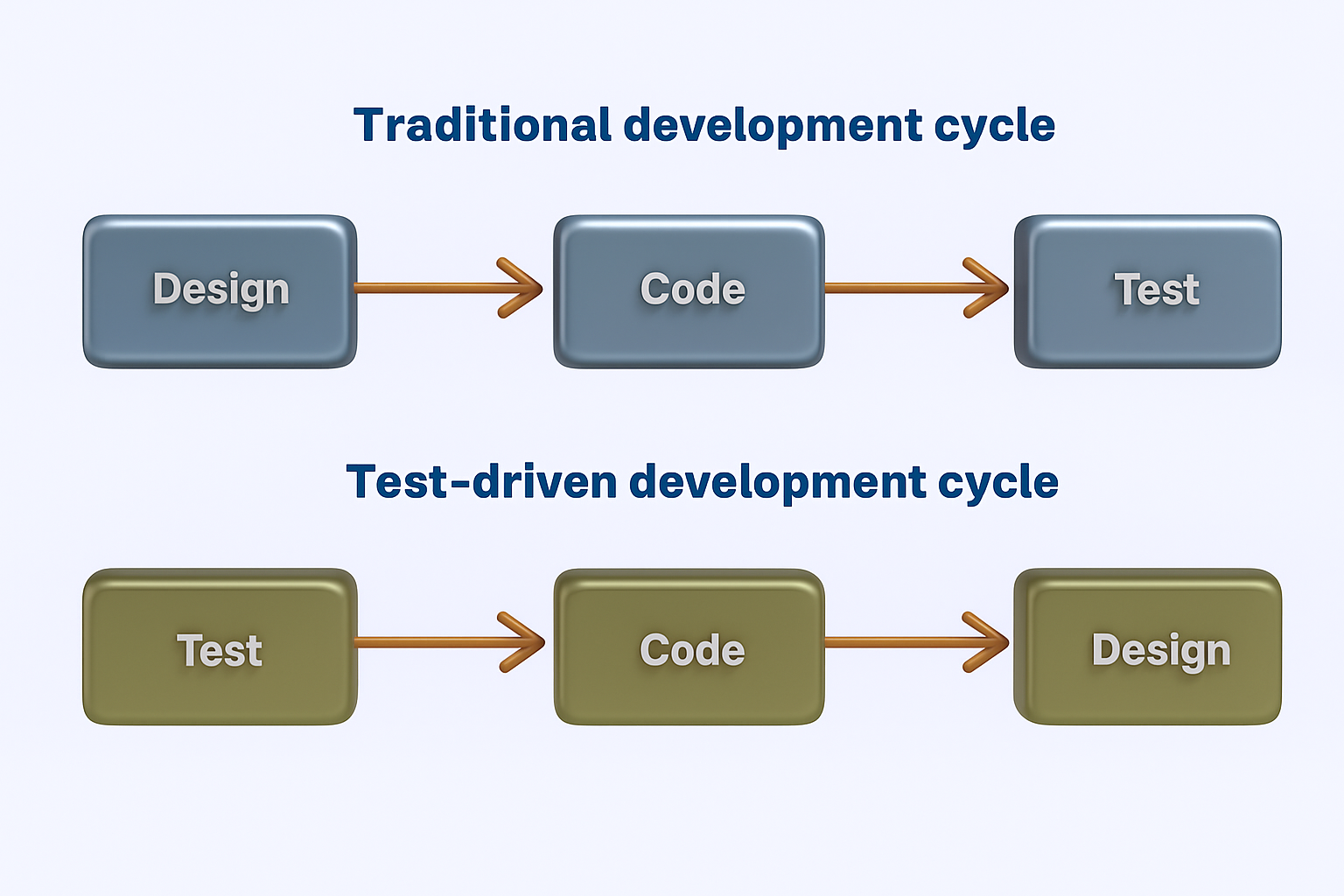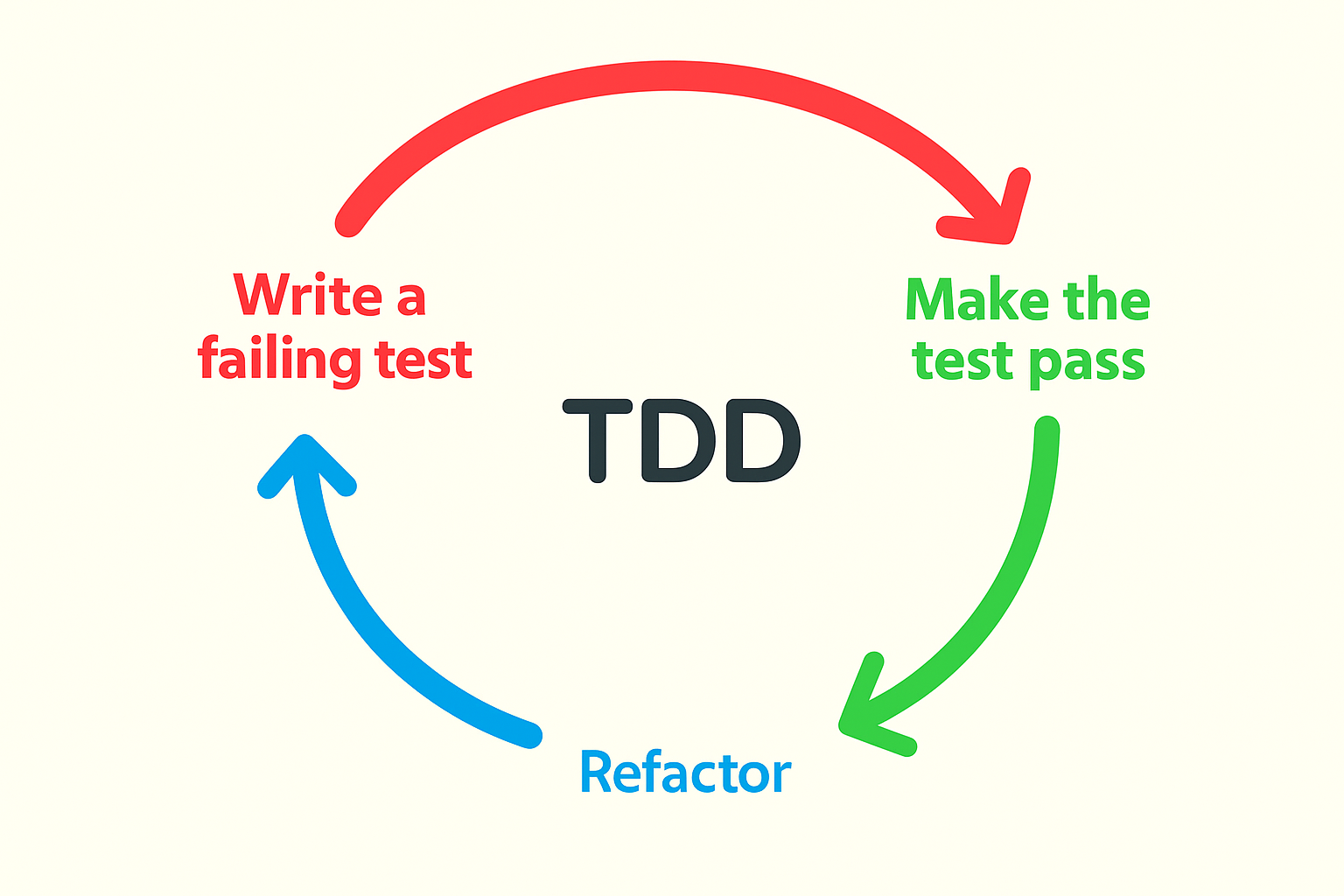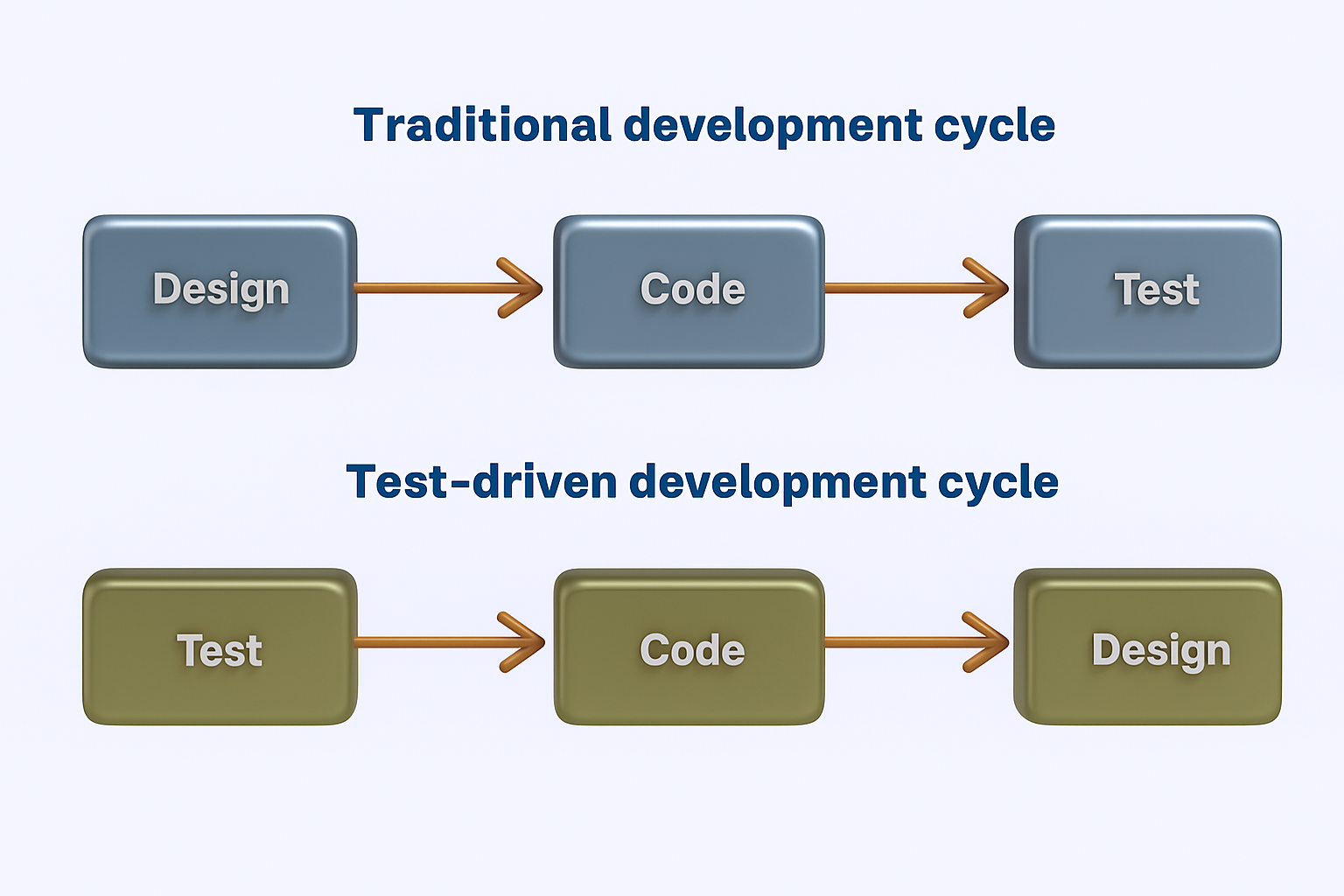In the fast-paced world of software development, teams are expected to deliver high-quality products quickly, often under shifting requirements. Enter Test Driven Development in Agile, a software testing strategy that flips traditional coding on its head by writing tests before the actual code. This preemptive approach ensures that every new feature is verified from the start, resulting in fewer bugs, faster feedback loops, and more maintainable code. TDD is especially powerful within Agile frameworks, where iterative progress, continuous feedback, and adaptability are core principles. By integrating software testing into the early stages of development, teams stay aligned with business goals, stakeholders are kept in the loop, and the software evolves with greater confidence and less rework.
But adopting TDD is more than just writing tests; it’s about transforming your development culture. Whether you’re a QA lead, automation tester, or product owner, understanding how TDD complements Agile can help you deliver robust applications that meet customer needs and business goals.
What is Test Driven Development (TDD)?
Test Driven Development (TDD) is a development methodology where tests are written before the actual code. This ensures that each unit of functionality is driven by specific requirements, resulting in focused, minimal, and testable code.
Core Principles of TDD:
- Write a test first for a new feature.
- Run the test and watch it fail (Red).
- Write just enough code to pass the test (Green).
- Refactor the code to improve the design while keeping tests green.
This process, known as the Red-Green-Refactor cycle, is repeated for every new feature or function.

The Red-Green-Refactor Cycle Explained
Here’s a quick breakdown of how this loop works:
- Red: Write a unit test for a specific behavior. It should fail because the behavior doesn’t exist yet.
- Green: Write the minimum code necessary to make the test pass.
- Refactor: Clean up the code while keeping all tests passing.
This tight loop ensures fast feedback, minimizes overengineering, and leads to cleaner, more reliable code.

How TDD Integrates with Agile Methodologies
Agile promotes adaptability, transparency, and continuous delivery. TDD aligns perfectly with these values by embedding quality checks into each sprint and ensuring features are verified before they’re shipped.
TDD Enables Agile by:
- Ensuring code quality in short iterations
- Offering real-time validation of features
- Empowering cross-functional collaboration
- Supporting continuous integration and delivery (CI/CD) pipelines
Example:
During a sprint, a development team writes tests based on the acceptance criteria of a user story. As they develop the functionality, the passing tests confirm adherence to requirements. If the criteria change mid-sprint, modifying tests keeps the team aligned with new priorities.
Key Benefits of TDD in Agile Teams
| S. No | Benefit | How It Helps Agile Teams |
|---|---|---|
| 1 | Higher Code Quality | Prevents bugs through test-first development |
| 2 | Faster Feedback | Reduces cycle time with instant test results |
| 3 | Better Collaboration | Shared understanding of feature requirements |
| 4 | Safe Refactoring | Enables confident changes to legacy code |
| 5 | Improved Maintainability | Modular, testable code evolves easily |
| 6 | Supports Continuous Delivery | Automated tests streamline deployment |
Related Blogs
Common Challenges and How to Overcome Them
- Inadequate Test Coverage
Problem: Over-focus on unit tests might ignore system-level issues.
Solution: Complement TDD with integration and end-to-end tests. - Initial Slowdown in Development
Problem: Writing tests first can feel slow early on.
Solution: ROI comes with time through reduced bugs and maintenance. - Skill Gaps
Problem: Teams may lack test writing experience.
Solution: Invest in training and pair programming. - Balancing Coverage and Speed
Focus on:- High-risk areas
- Edge cases
- Critical user flows
Best Practices for Effective TDD in Agile
- Start Small: Begin with simple units before scaling to complex logic.
- Use the Inside-Out Approach: Write core logic tests before peripheral ones.
- Maintain Clean Test Code: Keep tests as clean and readable as production code.
- Document Test Intent: Comment on what the test verifies and why.
- Review and Refactor Tests: Don’t let test code rot over time.
Tools and Frameworks to Support TDD
| S. No | Stack | Frameworks | CI/CD Tools |
|---|---|---|---|
| 1 | Java | JUnit, TestNG | Jenkins, GitLab CI |
| 2 | .NET | NUnit, xUnit | Azure DevOps, TeamCity |
| 3 | JavaScript | Jest, Mocha | GitHub Actions, CircleCI |
| 4 | Python | PyTest, unittest | Travis CI, Bitbucket Pipelines |
Advanced TDD Strategies for Scaling Teams
- Automate Everything: Integrate testing in CI pipelines for instant feedback.
- Mock External Systems: Use mocks or stubs for APIs and services to isolate units.
- Measure Test Coverage: Aim for 80–90%, but prioritize meaningful tests over metrics.
- Test Data Management: Use fixtures or factories to handle test data consistently.
Real-World Example: TDD in a Sprint Cycle
A product team receives a user story to add a “Forgot Password” feature.
Sprint Day 1:
QA and dev collaborate on writing tests for the expected behavior.
Tests include: email input validation, error messaging, and token generation.
Sprint Day 2–3:
Devs write just enough code to pass the tests.
Refactor and push code to CI. Tests pass.
Sprint Day 4:
Stakeholders demo the feature using a staging build with all tests green.
Outcome:
- No bugs.
- Code was released with confidence.
- Stakeholders trust the process and request more TDD adoption.
Conclusion
Test Driven Development in agile is not just a technical methodology; it’s a mindset shift that helps Agile teams deliver more reliable, maintainable, and scalable software. By placing testing at the forefront of development, TDD encourages precision, accountability, and collaboration across roles. It supports the core Agile values of responsiveness and continuous improvement, enabling teams to produce functional code with confidence. Whether you’re starting small or scaling enterprise-wide, implementing TDD can lead to significant improvements in your software quality, team efficiency, and stakeholder satisfaction. Start embedding TDD in your Agile workflow today to future-proof your development process.
Frequently Asked Questions
-
What is the biggest advantage of TDD in Agile?
The biggest advantage is early bug detection and confidence in code changes, which aligns with Agile’s goal of fast, reliable delivery.
-
How much time should be spent on writing TDD tests?
Typically, 20–30% of development time should be reserved for writing and maintaining tests.
-
Is TDD suitable for large and complex applications?
Yes, especially when combined with integration and end-to-end testing. It helps manage complexity and enables safer refactoring.
-
Can TDD slow down initial development?
It might initially, but over time, it leads to faster and more stable releases.
-
What skills do developers need for TDD?
Strong knowledge of testing frameworks, good design practices, and experience with version control and CI/CD tools.
The post Test Driven Development in Agile Framework appeared first on Codoid.
Source: Read More


